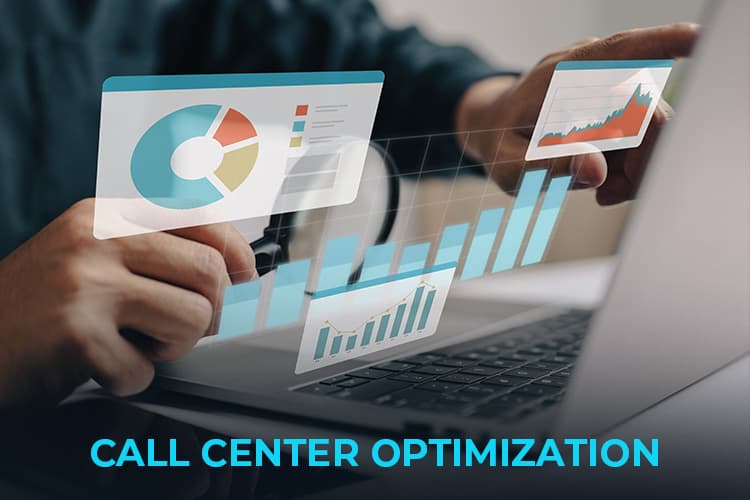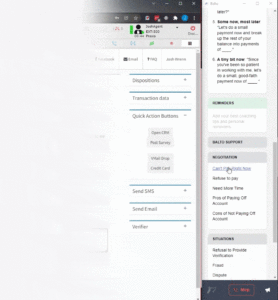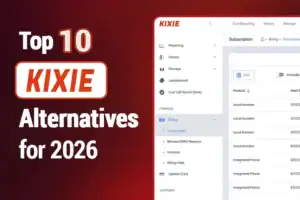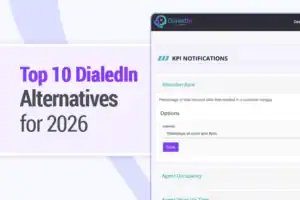Call center optimization is a strategic approach that focuses on enhancing the efficiency and effectiveness of call center operations. When companies implement specific tools and best practices, they can significantly improve their customer experience (CX), increase agent performance, and ensure high-quality service. This article delves into the essential aspects of call center optimization, including the tools and best practices that can drive performance improvements.
What is Call Center Optimization?
Call center optimization goes beyond minor operational adjustments. It represents a holistic approach that is aimed at transforming call center functions into a streamlined, customer-focused powerhouse. Organizations achieve this by integrating technology, refining processes, and deploying innovative human resources strategies. The ultimate objectives are crystal clear:
- Boost Customer Satisfaction: Happy customers are loyal customers. By optimizing call center operations, organizations can enhance the overall customer experience, leading to increased satisfaction.
- Elevate Operational Efficiency: Efficiency matters. Streamlined processes, well-trained agents, and effective tools contribute to smoother operations and faster issue resolution.
- Curtail Operational Expenses: Cost-effectiveness is crucial. Optimization helps reduce unnecessary expenses while maintaining service quality.
Achieving these goals requires a special balance between the human touch and technological innovation. Let’s explore some key features to look for in a contact center optimization tool:
Features to look for in a Contact Center Optimization Tool
The landscape of contact center optimization tools is diverse, with each tool offering unique features tailored to address specific call center challenges.
Here are some standout features:
Hold Queues and Smart Call Routing
Efficiently managing incoming call volumes is fundamental. Hold queues and smart call routing play a pivotal role.
- Hold Queues: Ensures calls are answered promptly, minimizing wait times.
- Smart Call Routing: Directs calls to the most suitable agent based on expertise, language, or past interactions. This increases the likelihood of first-call resolution.
Artificial Intelligence (AI):
- AI revolutionizes call centers by enabling smarter interactions and predictive insights.
- Data Analysis: AI analyzes vast data sets, identifying patterns and predicting customer behavior.
- Chatbots: AI-powered chatbots handle routine queries, providing quick and accurate responses.
Performance Metrics and KPIs:
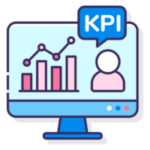 Monitoring call center performance is essential. Key Performance Indicators (KPIs) provide valuable insights.
Monitoring call center performance is essential. Key Performance Indicators (KPIs) provide valuable insights.
Agent Screen Capture:
Monitoring and improving agent performance is a continuous challenge in call center optimization. Agent screen capture technology offers a solution by allowing supervisors to review agents’ screens during customer interactions. This not only helps in ensuring compliance with protocols but also provides opportunities for coaching and feedback based on actual performance. By identifying areas for improvement, call centers can increase the quality of service and customer satisfaction.
Real-Time Dashboards and Post-Call Analytics:
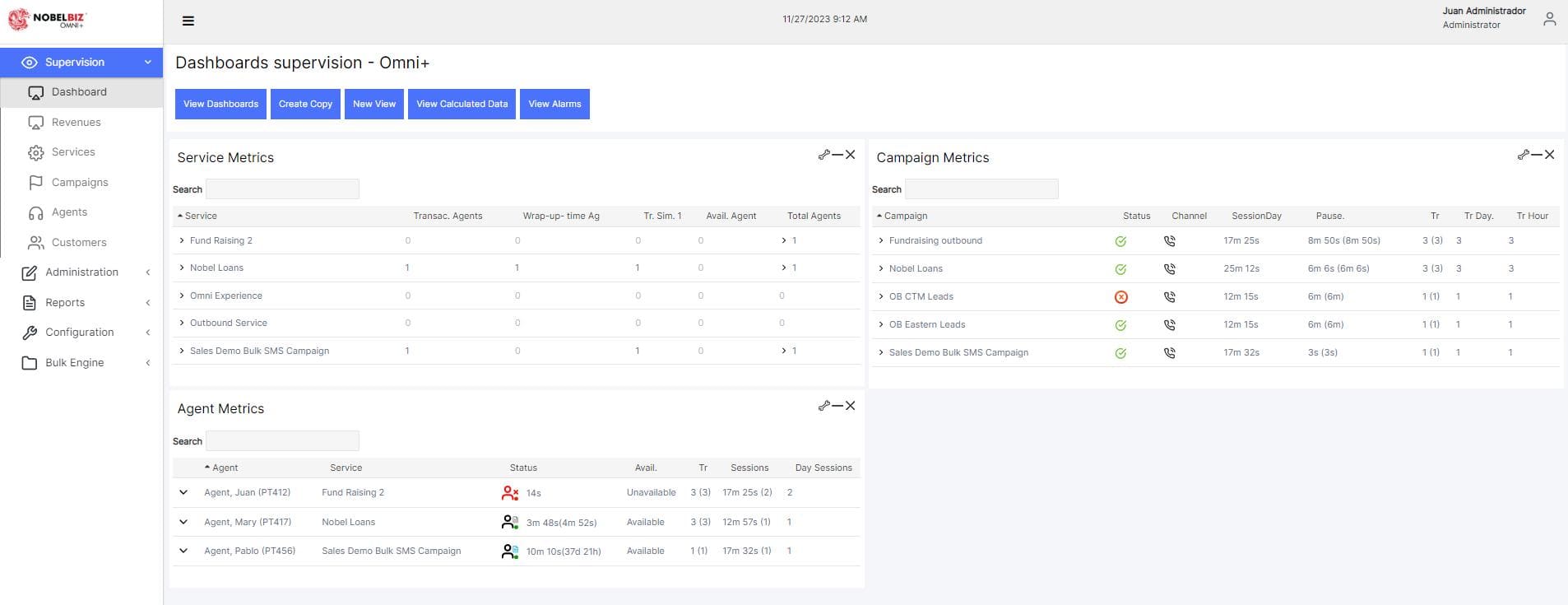
Real-time dashboards provide a snapshot of ongoing operations, allowing managers to make informed decisions quickly. Post-call analytics, on the other hand, delve deeper into each interaction, offering insights into customer behavior, agent performance, and potential areas for improvement. Together, these tools provide a comprehensive overview of call center operations, empowering managers to optimize performance continuously.
Call center optimization helps enhance the customer experience (CX) and acts as the linchpin in the relationship between a business and its customers. By streamlining operations, call centers can significantly reduce wait times, which normally is a common source of customer frustration. The improvements made in the call handling process directly contribute to a more positive customer experience, which contributes to higher levels of satisfaction and loyalty. When a call center operates efficiently, it not only reflects well on the immediate interaction but also enhances the overall perception of the brand.
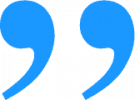
Brayan Carpio
“The technology aspect of NobelBiz stood out compared to the competition, and also the great team! All the way from onboarding to support to troubleshooting has been great throughout this journey!”
What to Optimize to Boost Call Center Performance
Agent Performance
Optimizing agent performance is crucial for improving call center operations and, by extension, the customer experience. Monitoring key metrics such as First Call Resolution (FCR), Net Promoter Score (NPS), and Customer Satisfaction (CSAT) offers invaluable insights into how well agents are meeting customer needs.
- First Call Resolution (FCR): This metric measures the ability of agents to resolve customer queries or issues on the first call. A high FCR rate is often correlated with higher customer satisfaction, as it reflects efficiency and effectiveness in handling customer inquiries.
- Net Promoter Score (NPS): NPS gauges customer loyalty by asking how likely customers are to recommend a company’s products or services. It provides insight into the overall customer relationship and satisfaction.
- Customer Satisfaction (CSAT): CSAT scores measure how satisfied customers are with the service they received. This feedback can highlight specific areas where agents excel or need improvement.
Tracking these metrics can pinpoint areas for agent training and development, ultimately leading to a more skilled and efficient workforce capable of delivering superior customer service.
Quality of Service: Call Center Quality Management (QM)
Quality management (QM) in call centers focuses on ensuring that every customer interaction meets a set standard of service. Through the implementation of quality management processes, call centers can systematically identify, monitor, and address issues in real-time. This proactive approach to maintaining service quality not only helps in rectifying problems before they escalate but also in continuously improving the service delivery process. High-quality interactions are key to building trust and satisfaction among customers, making QM an essential component of call center optimization.
Workforce Optimization (WFO)
Workforce optimization (WFO) strategies are designed to align the workforce with the incoming demand through efficient scheduling, training, and management of call center staff. By ensuring that the right number of agents, with the appropriate skill sets, are available at the right times, call centers can significantly improve their service levels and customer satisfaction. WFO encompasses a range of practices, from forecasting and scheduling to performance management and agent training. The goal is to create a flexible, responsive workforce that can adapt to changing customer needs and preferences, thereby enhancing the overall efficiency and effectiveness of the call center.
10 Tools to Increase Call Center Performance
Automatic Call Distributor (ACD) Systems:
ACD systems are foundational to managing incoming calls effectively. They route calls to the most appropriate agent based on predefined criteria such as skill set, availability, and customer need, thereby reducing wait times and evenly distributing workload among agents. This strategic call routing is essential for improving both customer satisfaction and the overall efficiency of the call center.
CRM Systems
CRM (Customer Relationship Management) systems play a crucial role in call center management by centralizing customer data from various touchpoints. This enables agents to provide personalized and efficient service by having immediate access to a customer’s history, preferences, and prior interactions. One of the primary advantages of CRM integration with contact center technology is call flow management. Fortunately, the unmistakable rise of digital technology has enabled the use of revolutionary cloud-based solutions. These solutions provide the ability to handle inbound and outbound calls through Internet-based telecommunication systems.
By leveraging CRM systems and tools like a QR code maker, call centers can enhance customer satisfaction through tailored interactions and responses.
RELATED ARTICLE
CRM Key Features For Customer Service
Interactive Voice Response (IVR) Systems
IVR systems enhance customer self-service by providing automated responses to common inquiries and guiding callers through menu options. This capability allows customers to resolve their issues without the need for direct interaction with an agent, leading to faster resolution times and reduced call volumes for more complex queries. IVR systems are integral in streamlining operations and improving customer satisfaction through efficient self-service options. A well-calibrated IVR system is the cornerstone for intelligent contact center automation.
RELATED ARTICLE
What is IVR?
Predictive Dialers
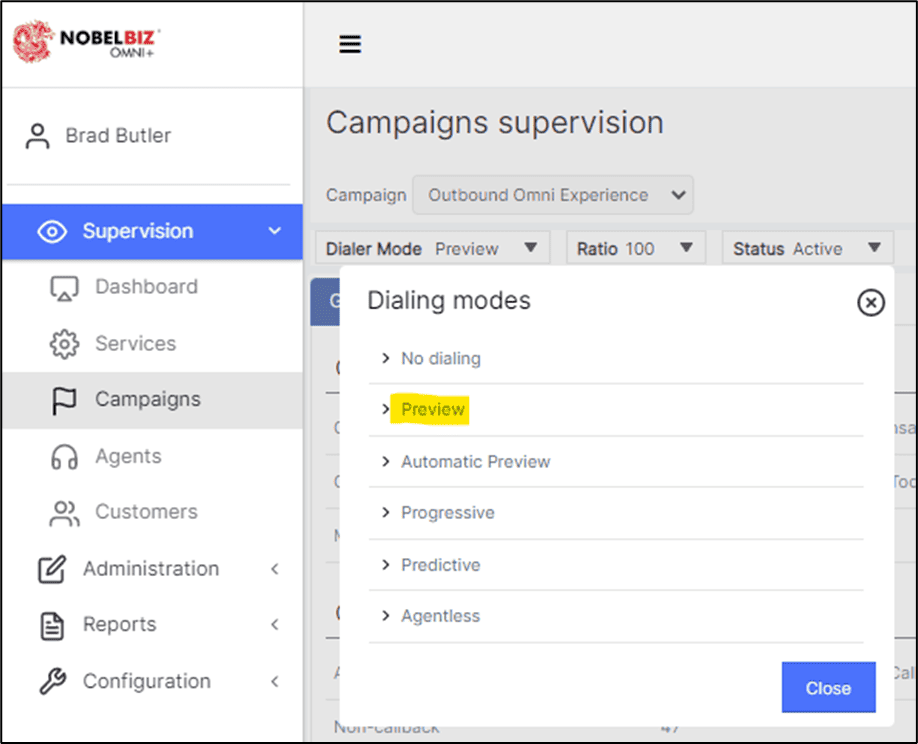
Predictive dialers are a boon for outbound call efficiency, automatically dialing numbers from a list and connecting agents to live calls. This technology minimizes idle time between calls, maximizing agent productivity.
Predictive dialers are particularly beneficial for sales and marketing campaigns, enabling agents to reach more potential customers in less time. In a B2C scenario with relatively short talk times, agents can go from an average of four contacts per hour (manual dialing) to 16 or more contacts per hour using a predictive dialer.
Call Monitoring Tools
Quality assurance is paramount in call center operations, and call monitoring tools facilitate this by allowing supervisors to listen to live calls. These tools enable real-time feedback and coaching, ensuring that agents adhere to quality standards and continuously improve their interaction skills. With the Real-Time Monitoring feature of NobelBiz OMNI+, you gain a powerful tool that can revolutionize your contact center operations. By providing a comprehensive and instant view of key metrics and performance indicators, Real-Time Monitoring enables supervisors to make data-driven decisions on the fly, ensuring optimal resource allocation and enhanced agent productivity. By identifying areas for improvement and recognizing exemplary performance, call monitoring tools are instrumental in enhancing the quality of customer service.
RELATED ARTICLE
The Power of Real-Time Monitoring in Call Centers
AI and Chatbots
AI and chatbots are transforming customer service by automating responses to common inquiries and providing instant assistance.
This technology frees up human agents to focus on more complex and nuanced customer issues, enhancing the efficiency and effectiveness of the call center.
AI-driven insights can also help personalize customer interactions, further improving the customer experience. This growing confidence in AI’s potential to transform business operations demonstrates its effectiveness in enhancing efficiency and effectiveness.
Workforce Management Software
Effective workforce management is critical for optimizing agent scheduling and workload, ensuring that the call center is adequately staffed to meet demand. This software helps forecast call volumes, schedule agents based on their skills and availability, and manage leave requests, thereby improving overall productivity and customer service levels.
Analytics and Reporting Tools
Insights into call center performance and customer satisfaction are invaluable, and analytics and reporting tools provide these insights by analyzing data from various sources. These tools help identify trends, measure key performance indicators (KPIs), and assess agent performance, offering a comprehensive view of the call center’s effectiveness and areas for improvement. Reporting & Analytics with NobelBiz OMNI+ helps elevate the user experience, our platform integrates advanced Call Center Analytics capabilities, enabling seamless measurement, tracking, and reporting of an extensive array of Key Performance Indicators (KPIs) and Service Level Agreements (SLAs).
Cloud-Based Contact Center Solutions
Cloud-based contact center solutions offer unmatched flexibility and scalability, enabling call centers to easily adjust to changing business needs and customer demand. These solutions support remote work, allow for rapid deployment of new features, and reduce the need for upfront capital investment in infrastructure, making them a cost-effective option for businesses of all sizes.
NobelBiz OMNI+ is an all-in-one omnichannel contact center software solution designed to combine ease of use with a complete productivity set of tools and low IT overheads, topped with unique differentiators:
- High server redundancy with almost 100% up-time
- Built-in compliance toolset
- Unique proprietary Voice Carrier Network with telco lines
- Advanced omnichannel contact center software capabilities
- Individual cloud architecture for each client
Knowledge Management Systems
Access to accurate and up-to-date information is vital for agents to resolve customer queries effectively. Knowledge management systems organize and store this information in an easily accessible format, enabling agents to quickly find the answers they need. These systems are essential for improving first-call resolution rates and overall customer satisfaction.
Omnichannel Communication Platforms
Omnichannel communication platforms ensure a seamless customer experience across multiple channels, including phone, email, chat, and social media. By providing consistent service and support regardless of the communication channel, call centers can meet customers where they are, improving accessibility and satisfaction. NobelBiz OMNI+ is a complete omnichannel contact center software solution equipped with a complex toolbox of features, functions, and integrations carefully designed to manage the operations of every type of contact center. You are looking at a customizable powerhouse of productivity and probably the only piece of software you will ever need to run virtually any omnichannel contact center activity.
Implementing Optimization Tools
Tips on How to Effectively Implement These Tools in a Call Center Environment
- Start with Clear Objectives: Understand what you aim to achieve with each tool—whether it’s improving customer satisfaction, reducing response times, or increasing agent productivity.
- Train Your Team: Ensure that your team is well-trained on how to use these tools effectively. Continuous training and support are crucial for maximizing the benefits of any new technology.
- Monitor and Adjust: Use the insights gathered from analytics and reporting tools to monitor performance and make necessary adjustments. Be prepared to tweak processes and strategies based on real-world results.
- Focus on Integration: Seamless integration between different tools and platforms can significantly enhance efficiency. Ensure that your CRM, ACD, IVR, and other systems work well together to provide a cohesive experience for both agents and customers.
- Solicit Feedback: Regularly gather feedback from both customers and agents on how these tools are impacting the service experience. Use this feedback to make informed improvements.
Implementing these tools and following best practices will improve your call center performance, leading to higher customer satisfaction and overall operational efficiency.
“When we found NobelBiz OMNI+ we were impressed with its flexibility, the fact that it is really easy to learn, and because we were able to deploy it probably faster than any software that I have ever seen.” Brad Dashnaw, CEO – Shift Marketing
6 Best Practices and Strategies for Call Center Optimization
Have Clear Metrics and KPI Tracking in Place
It’s essential to define what success looks like for your call center and how it will be measured. Establish clear metrics and Key Performance Indicators (KPIs) such as First Call Resolution (FCR), Customer Satisfaction Score (CSAT), Average Handle Time (AHT), and Net Promoter Score (NPS). Businesses that regularly track these metrics are able to identify trends, measure progress towards goals, and determine areas that require improvement.
Use A/B Testing
Experimentation is key to discovering the most effective strategies for your call center. A/B testing allows you to compare different approaches to see which one brings better results.
Percentage-based routing
Dividing incoming calls between different strategies or agent groups based on a predetermined percentage is another method which helps understand which routing strategy maximizes efficiency and customer satisfaction.
Create the right reports
Design reports that specifically measure the outcomes of your A/B tests. These reports should provide actionable insights that guide decision-making and strategy adjustments.
Agent Training
Enhancing agent skills and knowledge carries a lot of importance for improving call center performance.
Use gamification as part of training
Incorporate game-like elements in training programs to increase engagement and motivation. Gamification can make learning more interactive and enjoyable, leading to better retention of information and skills.
Focus on key areas of improvement
Identify common areas where agents struggle and tailor training to address these issues. This focused approach ensures that training is relevant and effective.
Address knowledge gaps
Regularly assessing agents is an efficient way to identify knowledge gaps. Providing targeted training or resources will fill these gaps, ensuring that all agents have the comprehensive knowledge needed to assist customers effectively.
Offer regular feedback
Constructive feedback is vital for agent development. Regularly review agent performance and offer feedback that encourages improvement and celebrates achievements.
Use your call data
Analyze call data to identify patterns and areas where training could be beneficial. This data-driven approach ensures that training efforts are aligned with actual performance challenges.
Connect Goal Setting and Improvement
Align individual and team goals with the broader objectives of your business. This connection ensures that everyone is working towards common aims and understands how their efforts contribute to the organization’s success.
Invest in Employee Experience
A positive employee experience is directly linked to better customer service. Ensure that your call center agents are engaged, supported, and satisfied with their work environment. This investment can include wellness programs, career development opportunities, and creating a positive workplace culture.
Optimize Your Tech Stack
Technology plays a crucial role in the efficiency and effectiveness of call center operations. Regularly assessing and updating your technology stack to ensure it meets the needs of your team and your customers is vital. This optimization might involve adopting new tools, upgrading existing systems, or streamlining software to enhance performance.
What Is the Best Solution To Run Call Center Campaigns?
Call center optimization is an ever-evolving and changing process. It requires attention to technology, processes, and people. By implementing these best practices and strategies, call centers can enhance their operations, leading to improved customer satisfaction, increased efficiency and driving desired business growth. The key to successfully implementing call center optimization practices lies in continuous improvement, staying adaptable, and always focusing on creating the best possible experience for both agents and customers.
By effectively leveraging voice services like the Nobelbiz Voice Carrier Network and Nobelbiz’s Omni+ omnichannel contact center software a call centers can significantly enhance their operational efficiency and customer engagement.

Michael McGuire is a contact center industry expert with almost two decades of experience in the space. His experience includes roles as Director of Contact Center Digital Transformation at NobelBiz, and as Director of Operations at FLS Connect, managing multiple call centers. As President of Anomaly Squared and Targeted Metrics, Michael successfully transitioned companies into remote operations and significantly boosted revenues. With a strong background in customer service, leadership, strategic planning, and operations management, Michael excels in driving growth and innovation in the call center space.
Mike is also a proud Board Member for R.E.A.C.H Trade Group, promoting consumer protection and satisfaction and Co-host of the Off Skripted Podcast – a show about Life, Call Centers and everything in between.


